Probability
Probability is a branch of mathematics that deals with the likelihood of a specific event occurring. It is used to quantify uncertainty and predict the likelihood of future events. In probability, we use mathematical tools to measure the chance of an event happening, ranging from impossible (0) to certain (1).
Key Concepts
- Sample Space: The set of all possible outcomes of an experiment. For example, when rolling a six-sided die, the sample space is {1, 2, 3, 4, 5, 6}.
- Event: A subset of the sample space. An event can be a single outcome or a combination of outcomes.
- Probability of an Event: The likelihood of an event occurring, denoted as P(event). It is a number between 0 and 1, where 0 means the event is impossible and 1 means the event is certain.
- Probability Formula: The probability of an event E, denoted as P(E), is calculated as the ratio of the number of favorable outcomes to the total number of possible outcomes.
- Complementary Events: The complement of an event E, denoted as E', is the event that E does not occur. P(E') = 1 - P(E).
Basic Probability Rules
- Addition Rule: P(A or B) = P(A) + P(B) - P(A and B), where A and B are events.
- Multiplication Rule: P(A and B) = P(A) * P(B|A), where P(B|A) is the probability of B occurring given that A has already occurred.
- Conditional Probability: P(A|B) = P(A and B) / P(B), which represents the probability of event A occurring given that event B has already occurred.
Applications of Probability
Probability has numerous real-world applications, including:
- Weather forecasting
- Financial risk management
- Sports statistics and predictions
- Medical diagnoses
- Quality control in manufacturing
Study Guide
To master the concept of probability, it's important to:
- Understand the basic definitions of sample space, event, and probability.
- Learn how to calculate probabilities using the probability formula and basic rules.
- Practice solving probability problems involving dice, coins, cards, and other common scenarios.
- Explore more advanced topics such as conditional probability and independence of events.
- Apply probability to real-world situations to understand its practical significance.
Remember to practice regularly and seek help from your teacher or tutor if you encounter challenges in understanding specific concepts.
[Probability] Related Worksheets and Study Guides:
.◂Math Worksheets and Study Guides Eighth Grade. Solving linear equations
Study Guide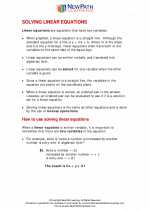 Solving linear equations
Solving linear equations  Worksheet/Answer key
Worksheet/Answer key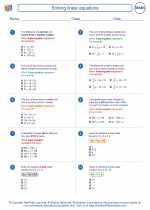 Solving linear equations
Solving linear equations  Worksheet/Answer key
Worksheet/Answer key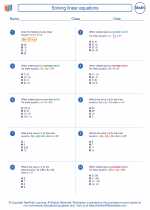 Solving linear equations
Solving linear equations  Worksheet/Answer key
Worksheet/Answer key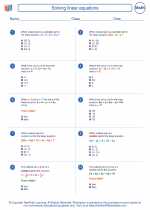 Solving linear equations
Solving linear equations  Worksheet/Answer key
Worksheet/Answer key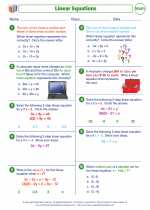 Solving linear equations
Solving linear equations  Worksheet/Answer key
Worksheet/Answer key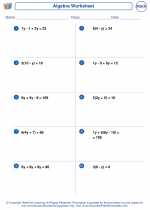 Solving linear equations
Solving linear equations 

 Worksheet/Answer key
Worksheet/Answer key
 Worksheet/Answer key
Worksheet/Answer key
 Worksheet/Answer key
Worksheet/Answer key
 Worksheet/Answer key
Worksheet/Answer key
 Worksheet/Answer key
Worksheet/Answer key

The resources above cover the following skills:
Algebra (NCTM)
Represent and analyze mathematical situations and structures using algebraic symbols.
Use symbolic algebra to represent situations and to solve problems, especially those that involve linear relationships.